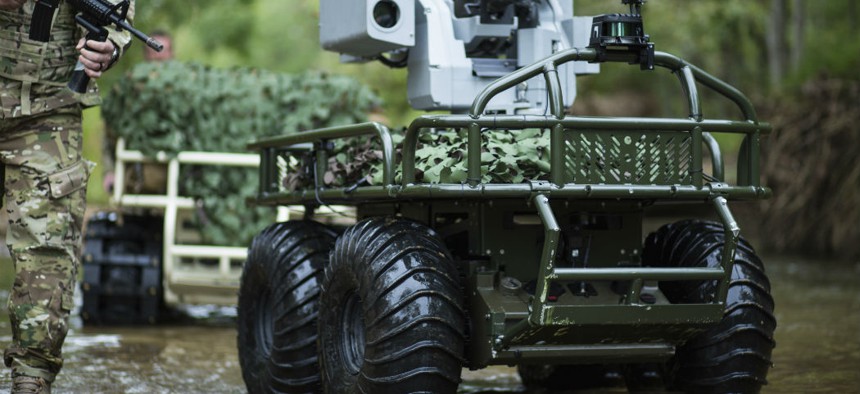Bomb-clearing robots help with battle against ISIS
The future is bright for unmanned ground vehicles that can sniff out improvised explosive devices and assess the terrain ahead.
In city-based conflicts, soldiers have started using lightweight, durable robots to sniff out improvised explosive devices and assess the terrain ahead. These remote-controlled soldiers, also called unmanned ground vehicles (UGV), have featured prominently in the Iraqi government’s recent invasion of ISIS-held Mosul.
"Robots will have a big role in the future of ground combat,” said Heidi Shyu, former Army chief weapons buyer, in a recent Defense Daily article. According to a market analysis released this week by marketsandmarkets.com, the UGV industry will be worth $18.65 billion by 2020.
The reason? “You need something to go before the soldier,” said Shahar Abuhazira, CEO of Roboteam, a provider of tactical ground robotic systems.
Roboteam is in well positioned to ride this rising robotics tide. Founded just seven years ago, the Tel Aviv-based company already has UGVs deployed in over 20 countries. It opened a U.S. subsidiary, based in Maryland, in 2012.
The company’s big break came last year, when the Air Force awarded it a six-year, $25 million contract for 250 anti-IED Micro Tactical Ground Robots. In addition to its bomb-diffusing capabilities, the robots can climb stairs and rocky terrain, offers 360-degree video and weighs less than 20 pounds. It even folds up into a backpack the soldier can wear.
Abuhazira attributes part of his company’s success to its personnel. All of the workers are ex-military. “They understand what the user will need,” he said. Abuhazira, himself, spent six years in the Israeli Special Forces.
In the coming months, Roboteam will release its newest product, the Transportable Interoperable Ground Robot, or TIGR. The company is also eyeing a $400 million Army contract to supply around 4,000 soldier-carried robotic systems and has partnered with DRS Technologies to ensure swift production.
As to the future of robotics on the battlefield, Abuhazira said that UGVs will not proliferate until non-experts can wield robots effectively. He also expects at least another decade will pass before fully autonomous unmanned ground vehicles will populate the industry.
“Communication between manned and unmanned … is a big challenge,” Abuhazira said. “Typical soldiers, they can look at each other, they can shout at each other, they know what to do. … In order to make [similarly capable robots], you need to create the same relationship between the system and the person.”




